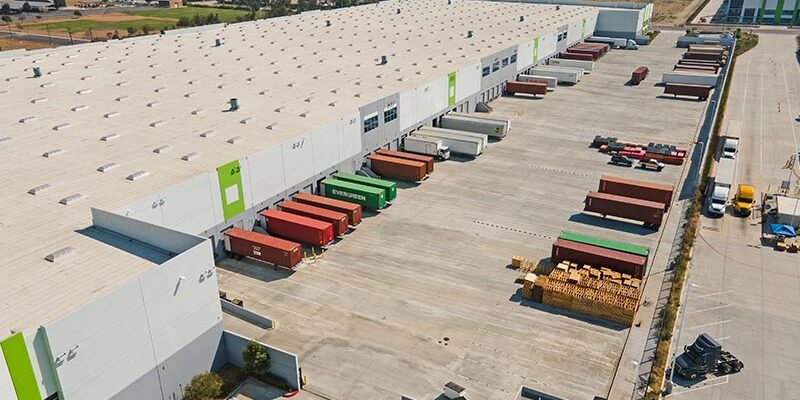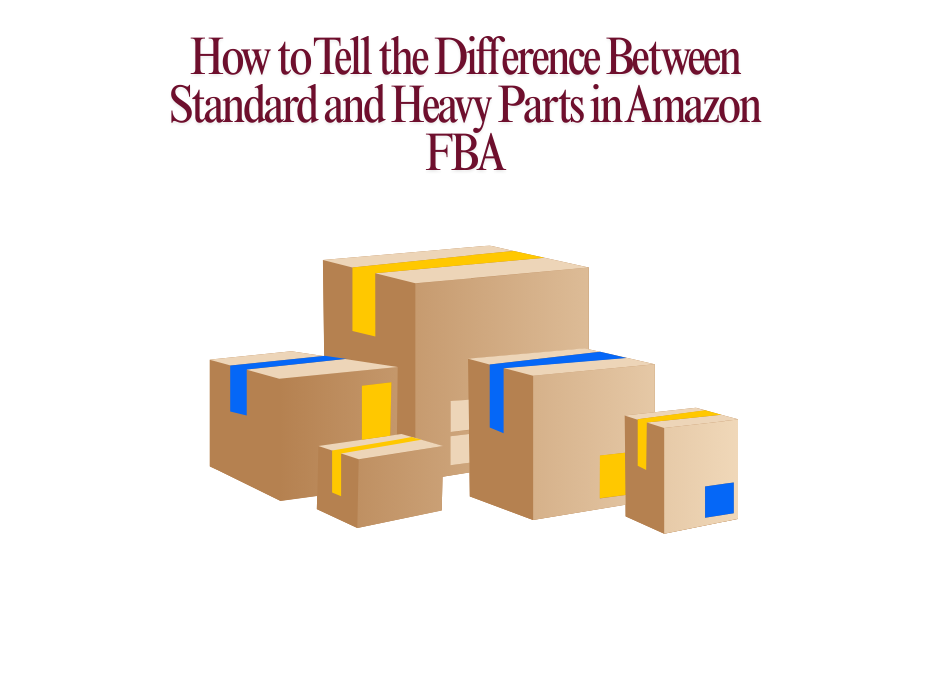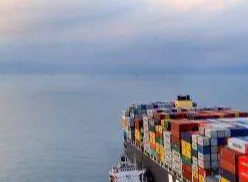When considering logistics solutions for cross-border e-commerce, choosing between Fulfillment by Amazon (FBA) and third-party overseas warehouses is crucial.
Sellers shipping products internationally, such as using a freight forwarder china to usa, often face decisions that impact everything from cost to delivery speed.
This makes it essential to understand which option suits your business best.

Quick Overview
Service Provider Comparison
Amazon FBA
Management: Directly operated by Amazon
Integration: Seamless integration with Amazon's marketplace
Coverage: Global fulfillment network
Process: Centralized handling of storage, picking, packing, and shipping
Quality Control: Standardized Amazon procedures
Scalability: Easily scalable during peak seasons
Third-Party Overseas Warehouses
Management: Independent logistics providers
Integration: Compatible with multiple sales channels
Coverage: Varies by provider
Process: Customizable operations
Quality Control: Varies by provider
Scalability: Dependent on warehouse capacity
Product Compatibility and Restrictions
FBA Requirements
Overseas Warehouse Flexibility
Logistics and Transportation
FBA Logistics
First-Mile Transport: Not included
Customs Clearance: Seller's responsibility
Last-Mile Delivery: Managed by Amazon
Delivery Speed: Prime-eligible fast shipping
Geographic Coverage: Amazon's established markets
Overseas Warehouse Logistics
First-Mile Transport: Often included
Customs Clearance: Usually handled by provider
Last-Mile Delivery: Multiple carrier options
Delivery Speed: Varies by location and carrier
Geographic Coverage: More flexible, including emerging markets
Cost Structure Analysis
FBA Costs
Fixed Costs
Storage Fees: Monthly rates vary by season
Fulfillment Fees: Based on size/weight
Long-term Storage: Penalties after 365 days
Return Processing: Additional fees apply
Variable Costs
Peak Season Surcharges: Higher rates during Q4
Removal Orders: Fees for inventory removal
Multi-Channel Fulfillment: Extra fees for non-Amazon orders
Overseas Warehouse Costs
Fixed Costs
Storage Fees: Usually lower than FBA
Handling Fees: Often negotiable
Processing Fees: Based on service level
Variable Costs
Volume Discounts: Available for larger quantities
Custom Services: Additional fees for special handling
Return Processing: Typically more flexible pricing
Inventory Management
FBA Inventory Control
Distribution: Amazon controls inventory placement
Tracking: Real-time inventory visibility
Restock Limits: Subject to Amazon's restrictions
Storage Limits: Based on IPI score
Commingling: Possible with identical products
Overseas Warehouse Control
Distribution: Seller controls inventory placement
Tracking: Provider-dependent systems
Restock Limits: More flexible
Storage Limits: Negotiable
Commingling: Usually not practiced
Marketing and Sales Impact
FBA Benefits
Prime Badge: Enhanced visibility
Buy Box Advantage: Higher win rate
Customer Trust: Amazon's reputation
Search Ranking: Potential algorithm advantage
Promotional Eligibility: Access to Amazon deals
Overseas Warehouse Considerations
Platform Independence: Multi-channel selling
Pricing Flexibility: Lower overhead costs
Brand Control: Better brand identity management
Custom Packaging: Available options
Promotional Freedom: Unrestricted by Amazon rules
Customer Service and Returns
FBA Customer Service
Support: Handled by Amazon
Return Process: Standardized
Resolution Time: Usually quick
Quality Consistency: High standards
Language Support: Multiple languages
Overseas Warehouse Support
Support: Seller-managed or provider-managed
Return Process: Customizable
Resolution Time: Varies by provider
Quality Consistency: Depends on provider
Language Support: Varies by location
Risk Management
FBA Risks
Account Suspension: Inventory access affected
Competition: Nearby similar products
Cost Fluctuations: Subject to Amazon's changes
Storage Limitations: Seasonal restrictions
Platform Dependency: Amazon-centric
Overseas Warehouse Risks
Provider Stability: Varies by company
Service Quality: Less standardized
Communication: Potential language barriers
Integration Issues: Technical challenges
Market Coverage: May require multiple providers
Business Scenarios
Best for FBA
High-volume Amazon sellers
Prime-focused businesses
Small, lightweight products
Fast-moving inventory
Brand registry sellers
Best for Overseas Warehouses
Multi-channel sellers
Large or heavy products
Custom handling requirements
Slow-moving inventory
Budget-conscious operations

Making Your Decision
Consider These Factors
Business Model: Your sales channels and strategy
Product Characteristics: Size, weight, and special requirements
Budget: Initial and ongoing costs
Control Needs: Inventory and fulfillment flexibility
Market Focus: Geographic targets and customer base
Growth Plans: Scalability requirements
Service Level: Customer experience priorities
Action Steps
Analyze Your Products: Review your catalog
Calculate Costs: Compare total expenses
Assess Markets: Evaluate target regions
Review Requirements: Check compliance needs
Test Options: Start with pilot programs
Conclusion
Both FBA and overseas warehouses offer distinct advantages for cross-border e-commerce. FBA provides a streamlined, trusted solution ideal for Amazon-focused sellers, while overseas warehouses offer flexibility and customization for diverse business needs. Many successful sellers use a hybrid approach, leveraging both options for different products or markets.
Additional Resources
Remember that the best choice depends on your specific business needs, and these solutions can be used complementarily to optimize your global e-commerce operations.
2024-05-30
Shipping Cost from China to the US
Shipping goods from China to the US involves several considerations, from choosing the right shipping method to understanding cost implications. Here's a comprehensive guide to navigating these crucial elements to ensure smooth operations and cost-efficiency.Ocean Freight from China to the USOcean Freight FCLOcean Freight FCL, or Full Container Load, is a shipping method where a single shipper's goods exclusively occupy an entire container. This approach is ideal for large, bulk shipments because it maximizes cost efficiency for high-volume cargo. Common container sizes used in FCL shipments include 20-foot, 40-foot, and 40-foot high-cube containers, each designed to accommodate different cargo volumes. Given that about 90% of the world’s trade is carried by sea, FCL shipping is a prevalent choice for substantial freight needs. By dedicating a whole container to one shipper, FCL shipping offers increased security, reduced risk of damage, and more predictable transit times compared to other shipping methods. Click Here to Check Ocean Freight FCL Quote from China to the United States: https://globalshippingauto.com/fcl-shipping-from-chinaOcean Freight LCLOcean Freight LCL, or Less than Container Load, is a shipping method used for cargo loads that are not large enough to fill an entire 20ft or 40ft shipping container. This method involves consolidating smaller shipments from different shippers or consignees into a single container, which optimizes space and reduces costs for each party involved. Approximately 90% of the world’s trade is carried by sea, and for shipments weighing more than 100kg or consisting of multiple cartons, ocean freight in containers is typically used. LCL shipping provides extensive and frequent direct services to and from all major ports and inland points worldwide, making it a versatile option for smaller shipments.Click Here to Check Ocean Freight LCL Quote from China to the United States: https://globalshippingauto.com/lcl-shipping-from-chinaAir Freight from China to the USAir Freight is the transportation of goods by aircraft, which is a fast and efficient means of shipping. Airlines transport over 52 million metric tons of goods per year, representing more than 35% of global trade by value but less than 1% of world trade by volume. Air freight is particularly advantageous for time-sensitive, high-value, or perishable goods that require rapid delivery. While air freight accounts for only about 1% of total freight transported worldwide by weight, it is a crucial component of global logistics and supply chain management. Air freight offers speed, reliability, and the ability to reach remote locations, making it a valuable option for businesses that need to quickly move small to medium-sized shipments around the world. Click Here to Check Air Freight Quote from China to the United States: https://globalshippingauto.com/air-shipping-from-chinaExpress from China to the USExpress shipping services like FedEx and DHL offer the fastest shipping times, ideal for urgent shipments. This method, however, is usually the most expensive due to its expedited nature and value-added services like door-to-door delivery and tracking.Click Here to Check Express Freight Quote from China to the United States: https://globalshippingauto.com/express-shipping-from-chinaFreight Forwarders from China to USAAuto Shipping is a specialized freight forwarding service that helps streamline international shipping from China to Amazon FBA warehouses, including in the USA. They offer comprehensive services like FCL and LCL ocean freight, air freight, express shipping, and customs brokerage. Auto Shipping focuses on competitive rates, secure transport, and fast delivery, ensuring compliance with Amazon FBA requirements to minimize delays or rejections at fulfillment centers. They also provide advanced tracking and dedicated customer support to keep clients informed throughout the shipping process.
2024-11-13
How to Tell the Difference Between Standard and Heavy Parts in Amazon FBA
Amazon FBA (Fulfillment by Amazon) offers an efficient way for sellers to store and ship products, but one key aspect of managing your products involves understanding the distinction between Standard-size and Oversize items. These classifications directly impact your storage fees, fulfillment charges, and overall operational costs. Misclassifying your products can result in higher expenses, so it's crucial to know the differences.For international sellers, especially those shipping products from China to the USA, working with a reliable freight forwarder China to USA Amazon FBA is essential. They help ensure that your products are delivered efficiently and classified correctly once they arrive at Amazon’s fulfillment centers.In this guide, we'll explore how to distinguish between these categories, giving you the tools to avoid unnecessary fees and manage your business more effectively.Standard-Size Product RequirementsStandard-size products are generally smaller and lighter, and they come with lower fulfillment fees. The rules for what qualifies as a standard-size product may seem straightforward, but precision is essential to ensure you're not inadvertently overclassifying your products.Key Criteria for Standard-Size Products:Standard-size products are limited to 20 pounds or less in weight.For the dimensions, the longest side (typically height) must not exceed 18 inches.The total size, calculated by adding length + girth, must remain under 130 inches.Standard-size products are those typically found in common categories like books, clothing, toys, and small electronics. For instance, a pair of shoes or a small backpack would usually qualify as standard-size.These size limitations ensure that standard-size products are easy to handle, package, and store within Amazon’s fulfillment centers. Because of their small size and lightweight nature, standard-size items benefit from cheaper storage and shipping fees.Additional Guidelines for Measuring Standard-Size Products:When it comes to measuring your product, make sure you account for the packaging dimensions as well. The girth, which is the perimeter of the product’s packaging, plays a significant role in determining whether your item qualifies as standard-size.The formula for calculating the girth is as follows:Girth = (2 x Width) + (2 x Height).This method ensures that irregularly shaped items are measured properly for classification.Oversize Product CriteriaOversize products are those that exceed the limits for standard-size products. These are typically larger, heavier items that require additional handling, packaging, and storage space. Because of this, they often incur higher fees.Key Criteria for Oversize Products:If the item weighs over 20 pounds, it will be classified as oversize.If any side of the product exceeds 18 inches, or if the total length + girth exceeds 130 inches, the product is considered oversize.Oversize products include a range of items such as large furniture, bulky electronics, and home appliances.Oversize products fall into different categories, with each category having specific weight and size requirements.Oversize Categories:Small Oversize: Products that are heavy but compact (e.g., guitars, foldable treadmills, small outdoor gear like kayaks). These items weigh up to 70 pounds.Standard Oversize: Products that weigh between 70 pounds and 150 pounds, such as large home appliances (e.g., microwave ovens) and bulky furniture (e.g., office chairs, bookshelves).Large Oversize: Products that weigh more than 150 pounds or are over 108 inches in total size. Examples include large recreational equipment (e.g., riding lawn mowers, large couches) and industrial machinery.Oversize products incur higher storage and fulfillment fees due to their size and weight. They also require additional packaging and handling, which is why these fees are generally much higher than for standard-size products.How to Accurately Determine the Product CategoryAccurate classification of your product is crucial for ensuring that you don't face unnecessary fees or delays. It’s essential to measure and weigh your product carefully to ensure it falls within the correct category. Here's a breakdown of the steps you need to follow to make sure your product is classified correctly:Step 1: Measure the ProductStart by measuring the longest side, which is typically the height. Then, measure the width and height of the product. It’s essential to include the product’s packaging in your measurements.For irregularly shaped items, you will need to calculate the girth using the formula:Girth = (2 x Width) + (2 x Height). Once you have the girth, add it to the length to get the total dimensional size.Step 2: Calculate the WeightWeigh the product along with its packaging. It’s important to note that Amazon uses both actual weight and dimensional weight (calculated based on size) to determine shipping costs and product classification. If the product is large but lightweight, its dimensional weight may push it into the oversize category, even if the actual weight is low.Step 3: Use Amazon’s ToolsAmazon Seller Central provides tools for calculating the correct classification. When you enter your product dimensions and weight into the system, it will automatically categorize the item as either standard-size or oversize based on the inputs.Additionally, you can use third-party FBA Size Tier Calculators that help you estimate the size tier of your product before listing it.Step 4: Watch for Regional DifferencesDifferent Amazon marketplaces (e.g., US, UK, Japan) may have slightly different classification rules. For example, the weight limits and dimensional restrictions for oversize items may vary between regions, so always check the requirements for the marketplace you are selling in.Practical Tips for Avoiding Extra FeesManaging the classification of your products is key to avoiding costly mistakes and unnecessary fees. Here are some practical tips to help you navigate this process effectively:Accurate MeasurementAlways measure both the product and packaging accurately to ensure that your items are correctly classified. For products that are on the border between standard-size and oversize, even a small difference in dimensions or weight can lead to a change in classification and result in higher fees.Use Dimensional WeightIf your item is large but lightweight, always consider dimensional weight when determining your product’s size classification. This is particularly important for bulky but lightweight items, such as large cushions or inflatable furniture.Reevaluate Products RegularlyAs you change the packaging or make modifications to your product, the classification may also change. It's essential to regularly check your listings to ensure that they are up-to-date and still categorized correctly. For example, switching to a more compact packaging design could potentially reduce your fees if it brings your product back into the standard-size category.The Impact of Oversize FeesOversize products come with significantly higher storage and fulfillment fees, which can eat into your profits. The reason for these increased fees is the extra handling and storage space required for larger items.Storage FeesOversize products are stored in Amazon’s fulfillment centers, and Amazon charges different storage fees based on the time of year. For example, long-term storage fees are higher during peak seasons, such as the holiday period. It’s important to plan your inventory carefully to avoid high long-term storage costs.Fulfillment FeesAmazon also charges higher fulfillment fees for oversize items, including costs for picking, packing, and shipping. For larger items, the shipping costs are significantly higher than for standard-size products. Moreover, these products may require additional packaging and handling, which contributes to the increased costs.To manage these costs:Consider optimizing packaging to reduce product size where possible.Use inventory management strategies to avoid overstocking, which can trigger long-term storage fees.ConclusionClassifying your products correctly into standard-size or oversize categories is crucial to running a successful Amazon FBA business. By understanding Amazon's size and weight requirements, accurately measuring your products, and using the available tools, you can ensure that your items are categorized correctly and avoid unnecessary fees. Regularly check your listings to ensure accuracy and manage your inventory efficiently to maximize profitability.By following these steps, you'll be better equipped to navigate Amazon’s complex fulfillment system and optimize your business operations.FAQsHow do I know if my product is Standard or Oversize?Measure your product's weight, length, and girth. If it exceeds 20 lbs or 18 inches in any dimension, it's Oversize.What happens if I misclassify my product?Misclassifying can lead to higher storage and fulfillment fees, impacting your profits.Can a freight forwarder help with FBA classification?Yes, a freight forwarder can help ensure your products are shipped correctly and classified based on size and weight.
2024-06-14
Simplifying Ocean Freight with Freight All Kinds
What is FAK (Freight All Kinds) in Ocean Freight?FAK, an acronym for Freight All Kinds, is a streamlined pricing model in the shipping industry, particularly prominent in ocean freight. It offers a unified freight rate for all types of cargo within a container, irrespective of the specific nature, classification, or value of the goods being shipped.Understanding FAK RatesIn traditional shipping methods, freight rates are often determined by several variables such as cargo type, weight, volume, density, and value. This intricate classification can complicate the pricing and quoting process. However, FAK rates simplify this by consolidating different goods into a single category and providing a flat rate for their transportation. How FAK WorksUnder the FAK pricing model, a shipper can load a container with various types of cargo without worrying about individual classifications affecting the overall freight cost. This method is particularly advantageous for Less-than-Container Load (LCL) shipments where different products are grouped and transported together [citation:3][citation:5][citation:6]. The primary principle is that the freight rate remains unchanged regardless of the contents of the container, promoting simplicity and efficiency in both logistics and cost management.Advantages of FAK in Ocean Freight1. Cost Efficiency: FAK can result in significant cost savings by averaging out freight rates, which can be especially beneficial for shippers transporting high-value or diverse goods.2. Simplified Quoting Process: Freight forwarders benefit from a more straightforward quoting process, allowing for quicker and more accurate rate quotations.3. Operational Flexibility: Shippers gain the flexibility to mix various types of cargo in the same container without incurring additional costs, optimizing space utilization and improving overall logistics efficiency.4. Time Savings: Reduced need for detailed classification and documentation results in time savings for both shippers and carriers, streamlining the booking and shipment processing stages.Use Cases for FAKFAK pricing is predominantly used in scenarios where a customer ships several types of cargo regularly but in smaller quantities, which might not fill a container entirely. This model is most advantageous in Less-than-Truck Load (LTL) and other freight consolidation services where combining different goods into single loads can lead to better economies of scale and lower transportation costs.Limitations and ConsiderationsWhile FAK provides numerous advantages, it may not be suitable for all types of cargo. Items requiring special handling, hazardous materials, or high-value products might not always be eligible under this simplified rate system due to their specific requirements and risks involved. It is crucial for shippers to verify whether their cargo qualifies for FAK with their freight forwarders or carriers.ConclusionFAK (Freight All Kinds) in ocean freight represents a significant shift towards a more efficient, cost-effective, and user-friendly shipping process. By enabling a unified rate for different types of cargo within the same container, FAK negates the complexities associated with individual rate variations, providing a robust solution for modern logistical demands. This method not only aids in cost savings but also enhances the overall efficiency of supply chain operations.





